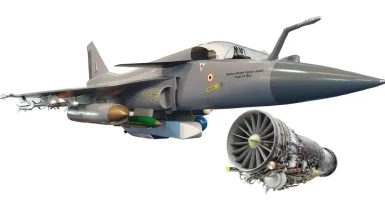- Views: 2K
- Replies: 4
In a major boost to India's indigenous defence capabilities, the Defence Research and Development Organisation (DRDO) has partnered with Bharat Dynamics Limited (BDL) and Larsen & Toubro (L&T) Defence to develop the advanced Pinaka Mk3 multi-barrel rocket launcher (MBRL).
This collaboration, estimated to be worth over ₹25,000 crore, is a key project under the nation's Aatmanirbhar Bharat (Self-Reliant India) policy.
According to industry reports, the system is expected to begin user trials with the Indian Army by the end of 2025.
The Pinaka Mk3 represents a significant technological leap from its predecessors, which have been in service with the Indian Army for decades and proved their effectiveness during the Kargil War.
Developed by DRDO’s Armament Research and Development Establishment (ARDE) in Pune, the new variant will nearly double the strike distance of earlier versions, with a range of 120 kilometres.
This enhancement is achieved through a larger 300 mm caliber rocket, which allows for more powerful propellants and advanced guidance technology.
The system is designed for high-impact, rapid-response engagements. A single Pinaka launcher can fire a salvo of 12 rockets in less than 44 seconds, with a full regiment of 18 launchers capable of saturating a target area of 1,000 by 800 metres.
The precision of the Mk3 has been greatly improved, featuring rockets guided by both GPS and Inertial Navigation Systems (INS). This gives it a Circular Error Probable (CEP)—a measure of accuracy—of less than 10 metres, making it a highly effective and cost-efficient weapon for destroying high-value enemy assets such as command centres, supply depots, and air defence installations.
Dr. Samir V. Kamat, the Chairman of DRDO, confirmed in a June 2025 announcement that the Pinaka Mk3 is in its final development phase. The first test fire of the new 300 mm rocket is scheduled for October 2025, paving the way for extensive user trials.
The system incorporates sophisticated features, including throttleable propulsion, which allows the rocket to adjust its trajectory mid-flight, making it more difficult for enemy air defence systems to intercept.
This development is a cornerstone of the Indian Army's comprehensive artillery modernization plan, which aims to induct 22 Pinaka regiments by 2030. These indigenous systems will replace older, imported MBRLs like the Russian-made Grad and Smerch.
The Pinaka systems are being integrated into the Army’s Artillery Command & Control System (ACCS), a digital network that combines real-time data from assets like the domestically-developed Swathi weapon-locating radar and the K9 Vajra self-propelled howitzer, enabling faster and more coordinated strikes.
Furthermore, DRDO is already conceptualizing a Pinaka Mk4 with a planned range of 300 km.
The strategic importance of the Pinaka Mk3 is directly linked to India's security challenges, particularly along its mountainous borders. The system's extended range and precision provide the Indian Army with the ability to engage targets deep inside enemy territory without crossing the border, offering critical operational flexibility.
The success of the Pinaka program has also elevated India's status as a defence exporter, evidenced by a recent sale to Armenia and reported interest from other countries, including France.
With domestic production capacity now exceeding 5,000 Pinaka rockets per year, India has ensured its self-reliance for sustained military operations.





